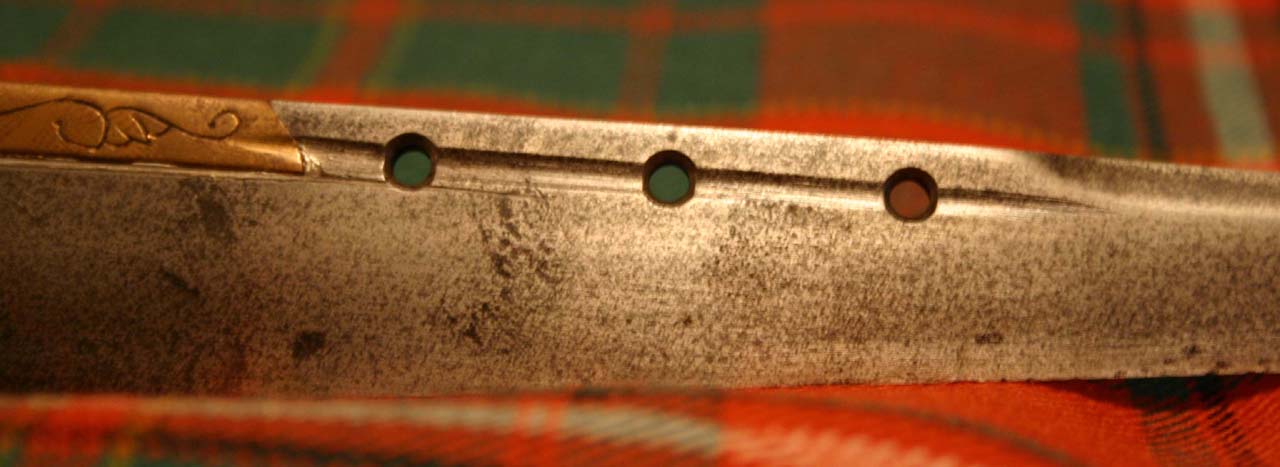Hi Dave,
Thanks for taking the time and trouble to look those up. I do appreciate it.
First on the Arkansas toothpick blades and as you probably thought, the diamond cross section of the blade is not correct for a true Scottish Dirk. In cross section, it should be either flat ground from the back of the blade to the edge on both sides of the blade or a sort of a rounded edge/flattened hexagon shape like a double edge sword blade. The latter as some dirks were made from sword blades (though by far most were not made from old sword blades).
Second thing on the Arkansas Toothpick blades, that tang is way too small/skinny to make a serviceable "using" knife. So it is not worth the effort to re-grind the blade.
You are correct the Paul Chen Hanwei Scottish Dirk does have the correct blade shape, but I don't know if tang is sturdy enough for use. I have never owned a Paul Chen Hanwei product, though I have heard some good things about them. If the blade has a good tang, I would not mind making a shorter grip, from scratch if necessary.
To give you an idea of what I want, back in the early 1980's, I needed an Officer's M1850 Foot Officer's Sword for reenacting. I have an Original that is the "Family Sword" presented to my ancestor during the War, but I only wore that at some living histories and ceremonies. I had hand sewed a proper leather scabbard for it and took the original brass fittings off the crude, non period replacement scabbard - to use on the newly made leather scabbard. However, I did not want to risk damage to the original sword or brass fittings that could come from reenacting.
As you know, even though the Modern Marine NCO sword is "somewhat" copied from the Model 1850, it is far from the "real thing."
Back in the early 1980's, I came across an Original Model 1850 separate sword blade, that had never been mounted into a sword. These had been found in storage and as "the story went" these blades were made in the 1880's through maybe the very early 20th century for Marine NCO swords. The great thing about the blade was it was made as a fully serviceable combat blade and virtually identical to Original WBTS sword blades.
So I bought that blade, found original brass grip parts and scabbard parts, made the leather "washer" that goes between the sword blade and brass guard, sewed the leather part of the scabbard and assembled the scabbard. I also found an original NOS, un-mounted wood grip and wrapped it in the proper leather and twisted brass wire. When it was finished, I had in effect, the equivalent of an original sword.
Now of course there is no way I would ever even hope to find an original Scottish Dirk Blade, but I am looking for a repro blade that would be the equivalent. I realize I can have an excellent repro complete dirk made, but would like to get a proper blade only, or if not, then I will make a repro blade myself.
Gus







